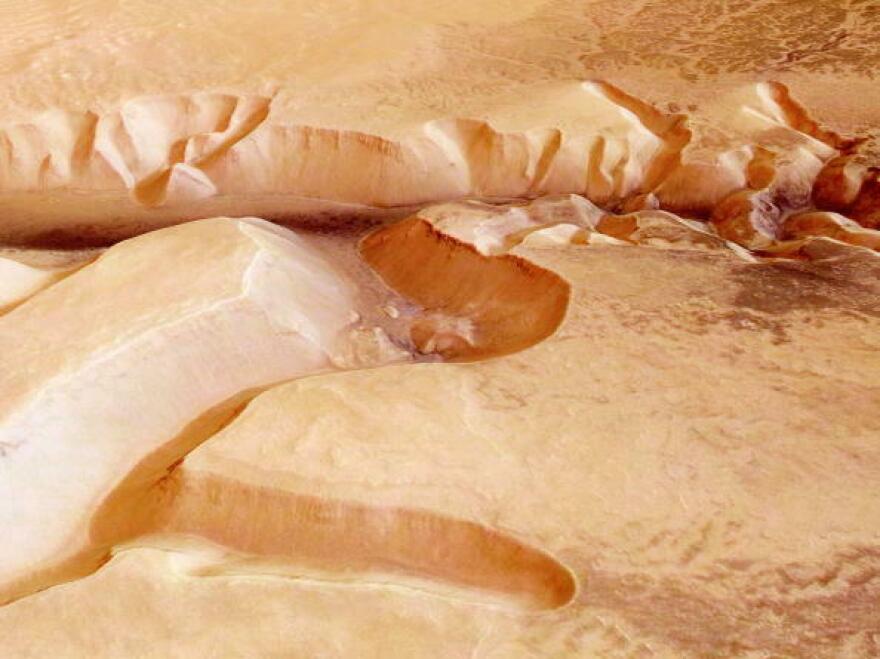Updated June 2, 2023 at 1:37 PM ET
Taking a picture of Mars is not easy.
Once light bounces off the planet, it can take between 3 to 22 minutes to travel to Earth — so there aren't truly "live" images of Mars.
But on Friday afternoon, the European Space Agency offered the closest thing: the first "livestream" of Mars on YouTube, which posted pictures of the planet every 50 seconds as they beamed down directly from the camera mounted on the agency's Mars Express orbiter. The livestream was about an hour long.
"Normally, we see images from Mars and know that they were taken days before. I'm excited to see Mars as it is now – as close to a martian 'now' as we can possibly get!" James Godfrey, the spacecraft operations manager at the ESA's mission control center, said in a statement.
In 50-second intervals, the camera panned across Mars, showing a side of the planet entering night, as well as some clouds billowing out on the corner.
The livestream celebrates the 20th anniversary of the Mars Express mission, which launched in 2003 to better understand the planet, as well as search for traces of water.
It's with this camera, originally meant for engineering purposes, that we'll get 'live' images this evening from 18:00 CEST in the first #MarsLIVE
— ESA Operations (@esaoperations) June 2, 2023
What makes this unique, is that it's a one-hour livestream from Mars - but don't expect a detailed view of the #RedPlanet! pic.twitter.com/9BkL9elZRB
Live footage from deep space is rare
There are only a few examples of "live" footage in space, including the famous Apollo missions showing astronauts walk on the moon's surface, as well as the DART and LCROSS missions where NASA intentionally crashed spacecrafts into asteroids and the moon, respectively, the ESA said in a news release.
"These missions were all pretty close to home and others farther away sent perhaps an image or two in near real-time," the ESA said. "When it comes to a lengthy livestream from deep space, this is a first."
Most observations and data gathered by spacecrafts are beamed down to Earth a few hours or even days later — which isn't generally an issue for scientists.
In fact, though the speed of light can make livestreams difficult, in other cases, it has been a boon for scientific discovery.
Take the Euclid mission. The telescope will capture light that has been traveling for 10 billion years, allowing scientists to see 10 billion years into the past, the ESA said.
Copyright 2023 NPR. To see more, visit https://www.npr.org.




